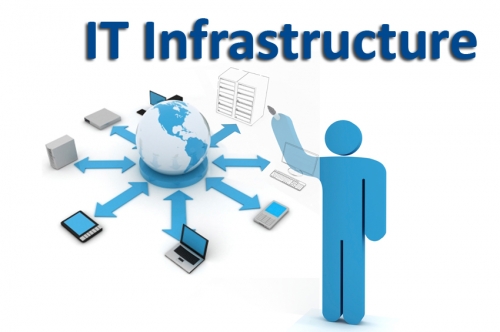IT Infrastructure
What does IT Infrastructure mean?
IT infrastructure refers to the composite hardware, software, network resources and services required for the existence, operation and management of an enterprise IT environment. It allows an organization to deliver IT solutions and services to its employees, partners and/or customers and is usually internal to an organization and deployed within owned facilities.
IT Core Solutions explains IT Infrastructure
IT infrastructure consists of all components that somehow play a role in overall IT and IT-enabled operations. It can be used for internal business operations or developing customer IT or business solutions.
Typically, a standard IT infrastructure consists of the following components:
- Hardware: Servers, computers, data centers, switches, Firewalls, hubs and routers, etc.
- Software: Enterprise resource planning (ERP), customer relationship management (CRM), productivity applications and more.
- Network: Network enablement, Internet connectivity, firewall and security.
- Meatware: Human users, such as network administrators (NA), developers, designers and generic end users with access to any IT appliance or service are also part of an IT infrastructure, specifically with the advent of user-centric IT service development.
Software Firewall
Features:
Gateway
Support for ADSL modems (USB, PCI)
ISDN support
Ethernet support
Load Balancing
Traffic Shaping
Multiple public IP addresses
Firewall & Security
Firewall (both directions)
Demilitarized Zone
Intrusion Detection System
Web-, FTP- and E-Mail-antivirus
Web- and E-Mail-Antispam
Content Filter
Hotspot/Wireless Access Point Security (Enterprise editions only)
HTTPS- Web interface
SSH- Access and Forwarding
Scheduler for automated backups
Server Services
Transparent HTTP, FTP, SMTP and POP3-Proxy server
Caching DNS-Server
DHCP-server (separately for the green, blue and orange network)
Network Address Translation
SIP VoIP-support (since 2.4.1 no longer included)
Virtual Private Network (VPN) Gateway with OpenVPN or IPsec
NTP-Server
Policy-Based Routing (port, MAC address, protocol or port)
Generic SNMP support
VLAN support (IEEE 802.1Q trunking)
User Management
Local
RADIUS
LDAP
Active Directory
NTLM Single Sign-On
User or group as HTTP proxy content filter rules
Logging & Monitoring
Visualized Live Log Viewer (AJAX based), see figure “The web interface of Endian Firewall”
Log the activities and the stress of network and hardware
Connection statistics
Forwarding possibility of syslogs to an external server
Top with integrated DASH Board
Event-based notifications by e-mail
